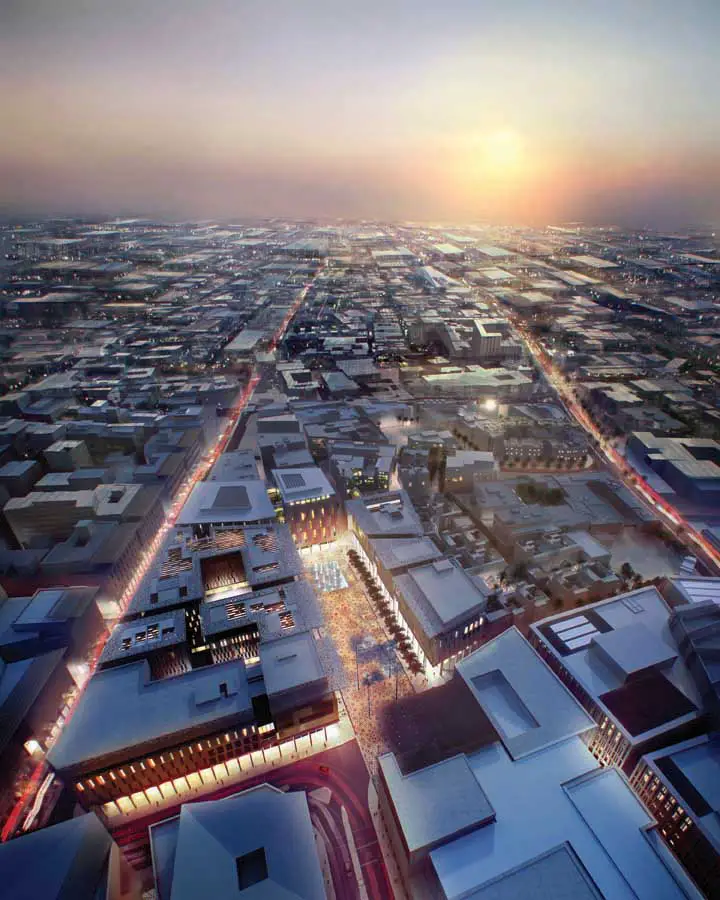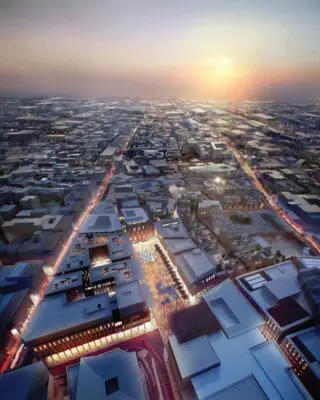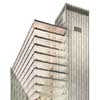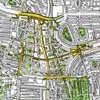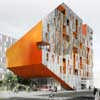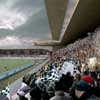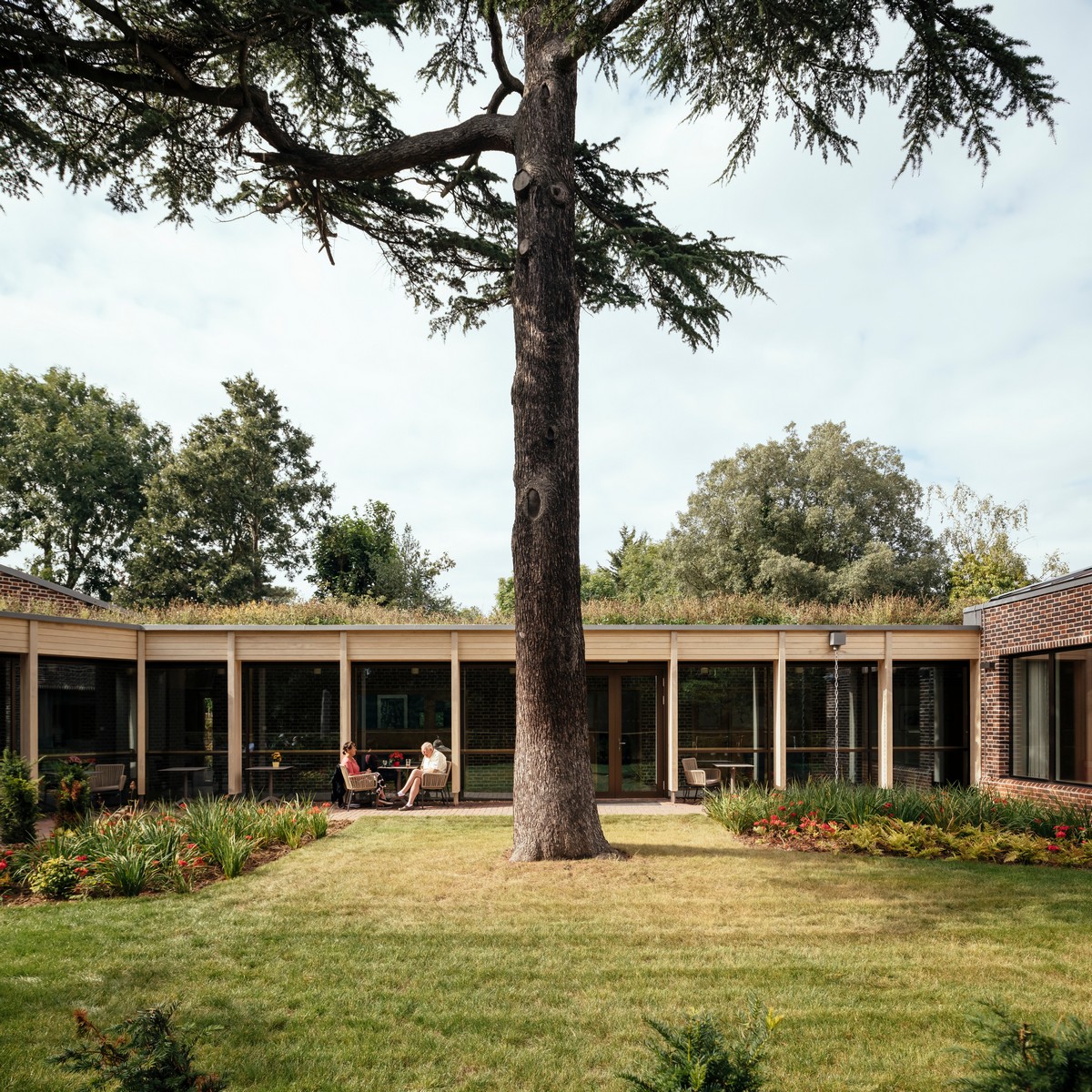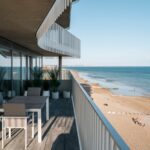MIPIM AR Future Project Awards 2011, Buildings Projects News, Doha Design Property Image
AR Future Projects Awards 2011 News
MIPIM Architectural Review Future Project Awards Winners
1 Feb 2011
mossessian & partners “Heart of Doha” Awarded Overall and Mixed Use Prizes
In the MIPIM Architectural Review Future Project Awards
Project creates contemporary vernacular architecture using traditional spatial hierarchies
MIPIM Architectural Review Future Project Awards Winners
London, 1st February 2011 – mossessian & partners’ vision for a major urban placemaking project designed to encourage residents back to the centre of Doha, Qatar has been named as both the Mixed Use and Overall Winner in the ninth annual MIPIM Architectural Review Future Project Awards.
The 48,865 m2 ‘Musheireb – Heart of Doha’ scheme for developer DOHALAND comprises nine residential, office and retail buildings orientated around a central square.
Designed to reverse the trend for decentralisation in the city, the scheme draws heavily on the Qatari architectural legacy with its traditional spatial hierarchies such as the majlis and internal courtyards.
mossessian & partners’ design solution also includes highly adapted passive strategies for thermal comfort against the ambient conditions of Doha, incorporating deep shade created by tall narrow streets and density, deep roof overhangs and layers of decorative screens. Marking a new benchmark for sustainable architecture in the Gulf region, the scheme is targeting LEED Gold efficiency.
The judges applauded the scheme for the significant attempt to create “a contemporary vernacular architecture in the Gulf. Public space is combined with extensive shading and its scale relates to everyday life”.
Marking a hat trick of awards celebrating architecture in the Middle East, Denton Corker Marshall won this year’s Tall Buildings award for Cluster Complex in Dubai, a 75 level, 111,500 sq m office tower composed of four separate shafts, each with several individual office buildings clustered vertically up a 255 m high atrium. A 27 storey hotel and 21 storey apartment tower are adjacent. The judges said, “The striking and variegated forms would be in marked contrast to the general run of Dubai’s buildings. The complex as a whole embraces the idea of a mixed use neighbourhood into which this tall building seamlessly plugs.”
The ninth annual international awards competition has named a total of seven project winners across eight categories selected from the hundreds of entries received, with winning projects hailing from Qatar, China, USA, UK, Dubai, Italy and France. An additional seventeen projects have been awarded a “Highly Commended” prize by the panel of judges.
The prestigious awards programme uniquely celebrates innovative thinking and approaches to design for buildings either still on the architect’s table or yet to be built, and forms the centrepiece event at the annual MIPIM property market for showcasing exemplar architectural design and robust responses to the client brief.
The judging panel was chaired by Paul Finch, Editorial Director of The Architectural Review; Roger Zogolovitch, Director AZ Urban Studios; Peter Stewart, Peter Stewart Consultancy; and Sutherland Lyall, author and critic.
A complete list of category winners include:
MIPIM Architectural Review Future Project Awards Overall Winner / Mixed Use
Winner – ‘Musheireb – Heart of Doha’ designed by mossessian & partners
Musheireb – Heart of Doha – Al Barahat Square
Intended to bring residents back to the centre of Doha, mossessian & partners’ scheme for developer DOHALAND comprises of nine residential, office and retail buildings orientated around a central square.
The design draws heavily on the Qatari architectural legacy with its traditional spatial hierarchies such as the majlis and internal courtyards. The judges applauded the scheme for the significant attempt to create “a contemporary vernacular architecture in the Gulf. Public space is combined with extensive shading and its scale relates to everyday life.”
Big Urban Projects
Winner – ‘Sino Swedish Eco-City Wuxi, China’ designed by Tengbom (Stockholm) with UDG (Shanghai).
Tengbom’s and UDG’s 2.4 ha urban extension to Taihu New City in Wuxi, is based on a northern European style road hierarchy and semi private block forms, with waterways from the adjacent Taihu lake threaded through the mixed residential, commercial and cultural zones (which includes an Olympic facility). The extension is connected to Taihu New City by new transportation and smart utilities network.
The judges welcomed the collaboration between China and Sweden, saying “This new town for 30 thousand people makes a convincing proposition about built form, water and green space. A marked contrast to typical high rise alternatives.”
Offices
Winner – Inland Steel Building renovation, by Skidmore Owings and Merrill.
Designed in 1958 by Skidmore Owings and Merrill, this landmark building is to be completely renovated by the same practice to achieve new standards of efficiency, sustainability and economy of space, through a sophisticated, modular infrastructure system.
The comprehensive scheme, which is projected to achieve triple LEED Platinum Certification for Renovation, Core and Shell, and Commercial Interiors, will include a second glass envelope behind the existing façade to create an active climate wall.
The judges commented: “The reinvention of this landmark Chicago office involved meeting the highest energy performance targets. It’s encouraging to see the relationship with the original and historic material.”
Regeneration and Masterplanning
Winner – The Earls Court Project, by Terry Farrell & Partners
The masterplan illustrates a vision for the entire area around London’s Earls Court Exhibition Centre. The proposed plans for the 28 hectare site, bound by both South and West Kensington, could create 6,000 – 8,000 new dwellings and three million square feet of commercial, cultural and retail space.
Terry Farrell and Partners are working with Capital & Counties Properties PLC (Capco), Transport for London and the London Borough of Hammersmith and Fulham on the project.
The judges commented: “This project represents a rare opportunity to revive and re-use a scarce and well-located parcel of land for regeneration make connections east to west and north to south that re-connects the disparate urban villages with the history of London’s development.”
Residential
Winner – Skyline housing, quartier Massena Chevaleret, Paris, France by Pangalos Dugasse Feldmann
Pangalos Dugasse Feldmann Architects’ uncompromising design for developer Paris Habitat OPH ‘s 47 unit residential building assures maximum daylight penetrates surrounding buildings whilst horizontal and vertical permeability between private and public space and flats have a double exposure.
The skin of the building which faces the garden has coloured and luminous glazed tiles whilst the external skin is a reflective metallic cloak pierced where the loggias and terraces are formed. The judges applauded the scheme’s new and exciting form, acting against the discipline and constraints of the masterplan.
Retail & Leisure
New Stadium, Siena, Italy by Lotti + Pavarani Architetti, Marazzi Architetti
Lotti + Pavarani Architetti’s and Marazzi Architetti’s design to create a new €60 million open arena in the Fossatone hills around Siena, for the Municipality of Siena, incorporates its surrounding and the relationship between the architecture and the landscape.
Recognising that both football and other events can coexist, the design includes a large sloping plane to one side for concerts and outdoor events whilst a single conventional 30,000m2 grandstand building provides climate-controlled accommodation for 500 VIP guests.
The judges were complimentary about the schemes intelligent and creative use of typography in a highly sensitive open landscape, adding “it holds out the promise of a really memorable football experience.”
Tall Buildings
Cluster Complex, Dubai by Denton Corker Marshall
Cluster Complex Dubai

image from architect
The 75-level, 111,500 sq m tower, designed by Denton Corker Marshall, is composed of four shafts, each with several individual office buildings clustered vertically up a 255 m high atrium.
A 27 storey hotel and 21 storey apartment tower are adjacent. The judges said: “The striking and variegated forms would be in marked contrast to the general run of Dubai’s buildings. The complex as a whole embraces the idea of a mixed use neighbourhood into which this tall building seamlessly plugs.”
Sustainability Winner
Philips Lighting Zero Carbon Emission Building
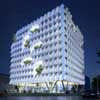
Arup Associates’ design for the Philips Lighting Zero Carbon Emission Building in Shanghai: Arup Associates designs for the showcase 21,600 sq m Philips Lighting Zero Carbon Emission Building in Shanghai has succeeded in this year’s Sustainability category for their naturally ventilated office building intended to act as a “lighthouse” for Philips and the surrounding districts through the change of colour using integrated lighting systems. The building is designed with a responsive ‘smart’ skin that responds to the environment with natural ventilation, shading and maximum daylight. Internally, the column-free U shaped floor plates wrap around vertical circulation and atrium. The building has a zero carbon design strategy achieved through passive, active and renewable design elements.
Paul Finch, chair of the judging panel, comments, “this has been a classic year for the awards, with some breathtaking projects succeeding across the twenty-four winning and highly commended schemes. Congratulations to all of our successful entrants.
“Our Overall Winner is a fascinating project that provides a design solution to the decentralisation of Doha, encouraging activity back into the centre through traditional Islamic urbanism and contemporary vernacular architecture”.
The Awards will be presented during a special celebratory dinner held at the Palais Stephanie in Cannes on Wednesday, 9th March during the annual MIPIM property market. The Awards are the hot ticket design event during MIPIM week. All entrants will also be displayed in the Architectural Review area of the London Stand, and all winning and commended schemes will be published in the official catalogue which is distributed to all registered MIPIM delegates.
The MIPIM Architectural Review Future Project Awards are organised in participation with EMAP Inform, and are supported by Protek, Buro Happold and Bespoke Career Management. FD is the communication partner.
MIPIM Architectural Review Future Project Awards 2011 images / information from FD
Location: MIPIM, Cannes, France
Architecture Awards
AR Awards for Emerging Architecture
MIPIM Asia Awards
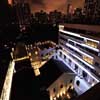
photo from architects
MIPIM Asia Awards
Comments / photos for the MIPIM AR Future Project Awards 2011 Winners News page welcome
Website: MIPIM AR Future Project Awards

